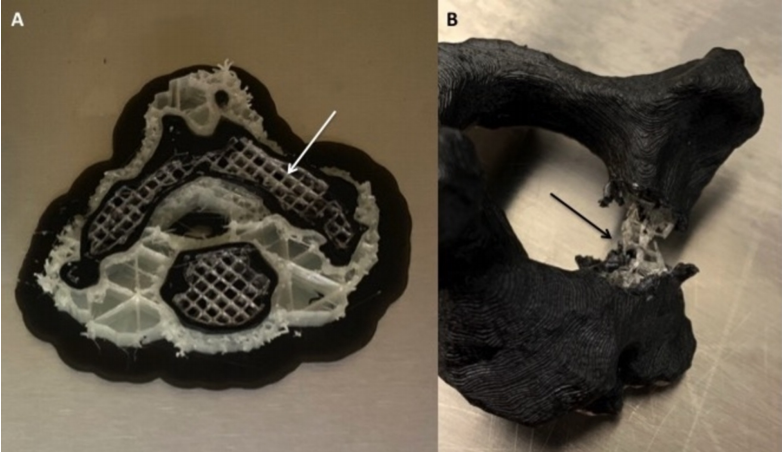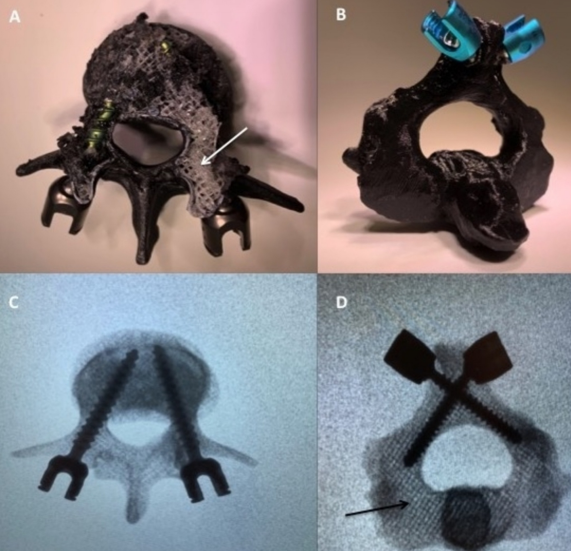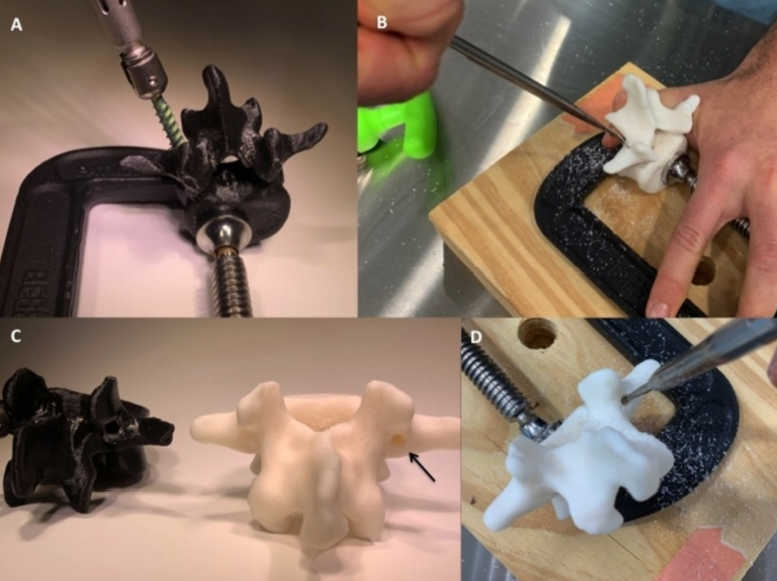Mayo Clinic Researchers Find Success in Feasibility Study of 3D Printed Spine Models
 In ‘A Feasibility Study for the Production of Three-dimensional-printed Spine Models Using Simultaneously Extruded Thermoplastic Polymers,’ a group of Mayo Clinic researchers – William Clifton , Eric Nottmeier, Aaron Damon, Conrad Dove, Selby G. Chen, and Mark Pichelmann – explain how and why they 3D printed models of the spine for surgical simulation.
In ‘A Feasibility Study for the Production of Three-dimensional-printed Spine Models Using Simultaneously Extruded Thermoplastic Polymers,’ a group of Mayo Clinic researchers – William Clifton , Eric Nottmeier, Aaron Damon, Conrad Dove, Selby G. Chen, and Mark Pichelmann – explain how and why they 3D printed models of the spine for surgical simulation.
Medical simulation can be invaluable for residents in training, although before the advent of availability with 3D printing, there was not quite as much accessibility—or possibility; in fact, cadavers are still considered the ‘gold standard’ for training with simulators, but they are more expensive, high-maintenance, and highly regulated.
Looking at the trend toward creating simulators that can mimic the feeling of penetrating cortical bone into cancellous bone during spinal instrumentation, the authors created three lumbar vertebrae and 20 C2 vertebrae models, using an Ultimaker S5 3D printer with PLA filament, and PVA (polyvinyl alcohol)—used to imitate cancellous bone inside the shell. While PVA is a plastic that tends to be spongy and water-soluble, it is generally not used in creating stand-alone structures, and has had limited use. With the accompaniment of PLA, however, parts are less brittle and exhibit greater ductility. The researchers state that here, the two materials are suitable for creating simulated bone.

(A) Solid view and (B) layered view demonstrating the planned infill matrix of the PVA (yellow, black
arrow) and the outer cortical shell (red surface)

(A) The interface of the PLA (black) and PVA (white matrix, white arrow) is shown during a printing session. (B) The outer shell of “cortex” (PLA) is removed from the pedicle of a finished model demonstrating the inner matrix of PVA (black arrow). An advantage of dual-extrusion 3D printers is the ability to change material deposition within the same print.
The researchers reported good success with all the models. There were no failures reported in either hardware or materials, and the PLA/PVA models proved to be superior over the single material models, and in tactile feedback, the researchers said that they ‘accurately represented the sensation of in vivo instrumentation during pedicle probing, pedicle tapping, and screw placement.’

(A) L3 vertebrae with PLA shell removed demonstrating the spongy PVA matrix (white arrow). Pedicle screws are seen within the matrix. (B) Laminar screws placed in the C2 experimental model without model failure. (C & D) Fluoroscopic images obtained post instrumentation. The PVA infill matrix can be seen under X-ray (black arrow).
Previously, popular 3D printed materials for fabricating vertebral bony anatomy for biomechanical testing and instrumentation have been used with a wide range of different results:
- A variety of resins
- Acryl butadiene styrene (ABS)
- Nylon
- Polylactic acid (PLA)
- Thermoplastic urethane (TPU)
“Another limitation of most previously published models is their constraint of a one material print. Literature suggests that decreasing the print infill percentage adequately simulates the density change of cortical bone to cancellous bone. These findings have been quantified with regards to subjective user feedback and biomechanical stress with good results,” stated the researchers. “A possible limitation of this modeling technique is the ultrastructure of the print does not completely simulate the complex characteristics of human vertebrae.
“Bone strength is composed of two properties: bone mass, or quantity of material, as well as the bone quality, or mechanical properties of the material. Previous spinal models have incorporated these parameters individually, but not collectively.”
Shells printed with dual materials were selected because of anatomical differences and instrumentation placement methods and were limited to only the lumbar and cervical forms. Ultimately, the PLA/PVA method was promising for use in both educational and biomechanical simulators.
“This has large implications for the spinal instrumentation industry as well as resident training. This concept and design of simultaneous multi-material printing using our unique infill algorithm have not been yet reported in the medical literature,” concluded the researchers. “Further educational and biomechanical testing on our design is currently underway to establish this printing method as a new standard for spinal biomimetic modeling.”
Medical models overall have become extremely helpful in medicine, and while simulators may sometimes be larger and more complex in design, smaller models are often used for diagnosing conditions like tumors, training and surgical planning with 3D printed models of the brain, and even those that allow parents to plan for babies with medical issues. Find out more about how 3D printing is making a positive impact with progressive simulators here. What do you think of this news? Let us know your thoughts! Join the discussion of this and other 3D printing topics at 3DPrintBoard.com.

(A) The L3 PLA/PVA experimental model was successfully probed, tapped, and instrumented with a pedicle screw. (B) The resin print pedicle was unable to be accessed manually with the curved probe due to its solid properties. (C) The resin print (white) is shown to be completely solid (black arrow) when a pilot hole is drilled (D) with a high-speed burr. The pedicle of the resin model cracked after it was drilled and tapped.
Subscribe to Our Email Newsletter
Stay up-to-date on all the latest news from the 3D printing industry and receive information and offers from third party vendors.
Print Services
You May Also Like
New Business: Temporary, Migratory, & Modular 3D Printed Architecture
If we look at potentially emerging 3D printing businesses, then architecture has not been fully explored. Yes, there is a lot of house 3D printing going on worldwide. From deployable...
3D Printing News Briefs, April 19, 2025: Material Extrusion Standard, Metal Powder, & More
In today’s 3D Printing News Briefs, we’re covering a proposed standard for material extrusion, before moving on to business and metal powder. We’ll end with a commercial store’s robotic 3D...
Japan Unveils World’s First 3D Printed Train Station
Japan is now home to what we believe is the world’s first train station built with 3D printing technology. Located in Arida City, just south of Osaka, the new Hatsushima...
restor3d Raises $38M to Expand 3D Printed Orthopedic Implants
Backed by $38 million in new funding, restor3d is pushing ahead with the launch of four personalized implant lines, set to roll out in 2025 and 2026. This latest venture...

























